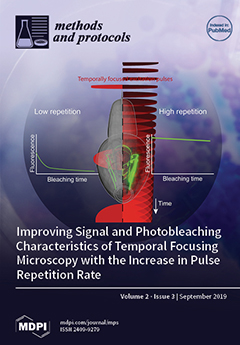Approaches are sought after to regulate ionotropic and chronotropic properties of the mammalian heart. Electrodes are commonly used for rapidly exciting cardiac tissue and resetting abnormal pacing. With the advent of optogenetics and the use of tissue-specific expression of light-activated channels, cardiac cells
[...] Read more.
Approaches are sought after to regulate ionotropic and chronotropic properties of the mammalian heart. Electrodes are commonly used for rapidly exciting cardiac tissue and resetting abnormal pacing. With the advent of optogenetics and the use of tissue-specific expression of light-activated channels, cardiac cells cannot only be excited but also inhibited with ion-selective conductance. As a proof of concept for the ability to slow down cardiac pacing, anion-conducting channelrhodopsins (GtACR1/2) and the anion pump halorhodopsin (eNpHR) were expressed in hearts of larval
Drosophila and activated by light. Unlike body wall muscles in most animals, the equilibrium potential for Cl
− is more positive as compared to the resting membrane potential in larval
Drosophila. As a consequence, upon activating the two forms of GtACR1 and 2 with low light intensity the heart rate increased, likely due to depolarization and opening of voltage-gated Ca
2+ channels. However, with very intense light activation the heart rate ceases, which may be due to Cl
– shunting to the reversal potential for chloride. Activating eNpHR hyperpolarizes body wall and cardiac muscle in larval
Drosophila and rapidly decreases heart rate. The decrease in heart rate is related to light intensity. Intense light activation of eNpHR stops the heart from beating, whereas lower intensities slowed the rate. Even with upregulation of the heart rate with serotonin, the pacing of the heart was slowed with light. Thus, regulation of the heart rate in
Drosophila can be accomplished by activating anion-conducting channelrhodopsins using light. These approaches are demonstrated in a genetically amenable insect model.
Full article






